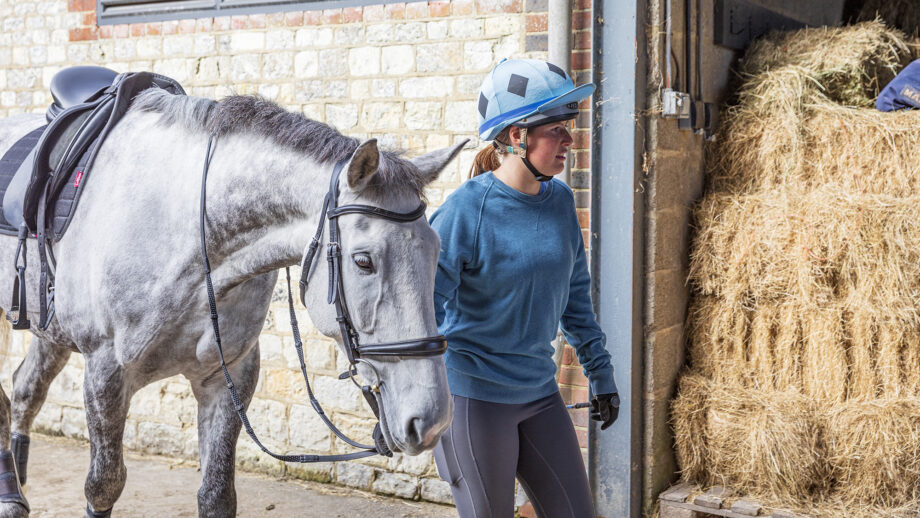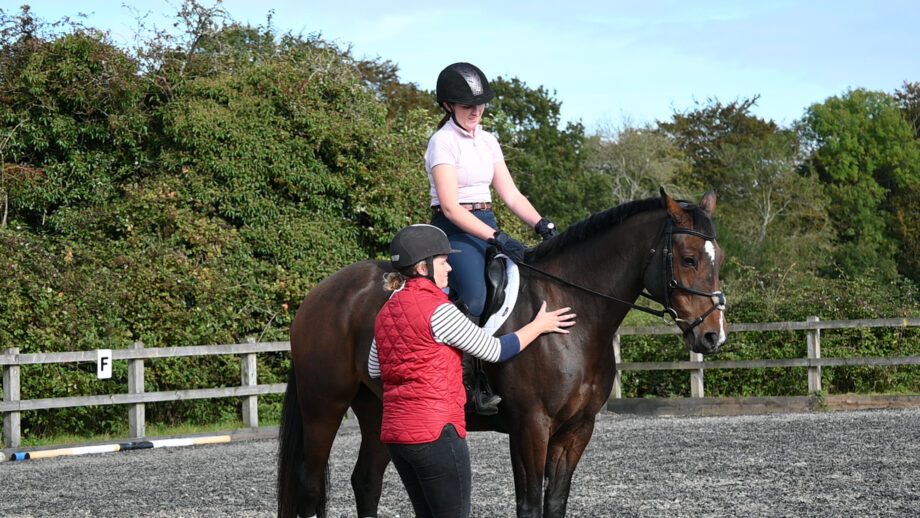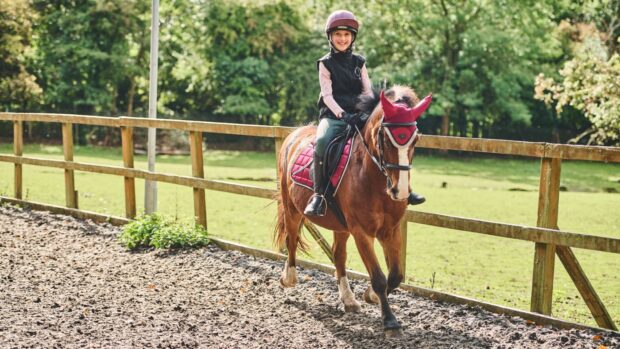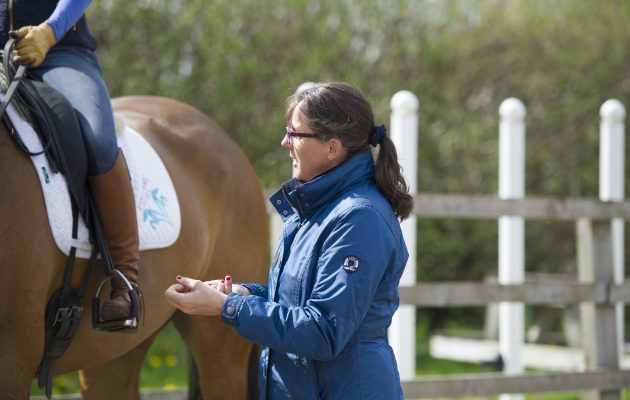Horse riding is an activity that’s open to all ages and abilities, and you’re never too old to start learning how to ride a horse. While it’d be impossible to learn how to ride purely from reading a set of instructions – because it’s all about feel – they can give you an idea of what happens and how you can signal to a horse what you want to do, whether it be go faster, slower or in another direction.
How to ride a horse
When you’re sat on a horse, they can feel it every time you move. Imagine giving a child a piggy back – when the child adjusts their position you can feel it and it’s the same when you’re riding. It’s the adjustments in your position – your body, arms and legs – that give signals to the horse and let him know what you’re asking him to do. These are called aids.
Like people, every horse is different. While all most horses are trained to respond in the same way to the aids you give them, some are more sensitive than others.
Mounting a horse

To get on a horse, you should first approach from the left-hand side. Step onto the mounting block and pick up the reins in your left hand, holding them with a bit of the horse’s mane. Place your left foot in the stirrup and your right hand on the front of the saddle, press down in the stirrup straightening your left knee and gently lift your right leg over the horse’s back. Lower yourself down slowly before slotting your right foot into the stirrup on the other side.
How to sit in the saddle
Sit up tall and straight, holding the reins in each hand with a relaxed arm and slight bend in your elbow. The reins come from the horse’s mouth into the bottom of your hand between your little and ring finger, then pass through your palm and out over your first finger. Your thumb sits snuggly on top of the rein to maintain it’s length and prevent the horse from pulling the reins out of your hands. Your fist should be closed like you are holding a small bird or a child’s hand when crossing the road, so firmly but not tightly. You should be able to draw a straight line from your shoulder, through your hip to your heel – and your heels should be slightly lower than your toes. Always look up and ahead of you in the direction you’re going and avoid looking at the ground.
How to ask a horse to walk forward
To ask a horse to go forward, you need to apply inward pressure on the horse’s side with your leg. Think of it as a squeeze rather than a kick. You can also use your voice to say “walk on” as most horses will respond to this.
How to ask a horse to stop
Making sure you’re still sitting up straight with your shoulders back, push your weight slightly more into your heels. Gradually increase the pressure on the reins with your hands – imagine you’re gently squeezing a stress ball. You can also use your voice to say “woah” or “stand” – by saying it slowly and calmly your horse will know to come to a stop.
How to turn a horse
You can use your body position to ask a horse to turn in a particular direction. If you want to turn to the right, turn your head and shoulders in that direction. This will adjust your weight on the horse’s back as well as automatically move your arms and legs into the position that tells your horse to turn. Your right hand will come out to the right to guide him, while your left leg will encourage him to turn his body.
How to trot on a horse
The trot is the next pace after walk – it is like a jog. It’s bouncy, so most riders choose to do rising trot, which involves standing up in your stirrups slightly to lift your weight off the horse’s back, then gently sitting back down in time with the horse’s step. Learning to do rising trot is an important early skill all riders need to master to make riding more comfortable.
To ask your horse to trot, you first need to shorten your reins (by moving your hands closer to the horse’s head) as when you horse trots he will lift his head up – you want to prevent your reins becoming slack. Then, still looking up and ahead, you can apply pressure to your horse’s sides with your legs to signal your horse to trot. It might help to give him the command “trot on”.
To return to a walk, sit up straight and push your heels down. Gently increase the pressure on the reins and say “walk” slowly and calmly, similar to when you asked your horse to stop.
Safety when learning how to ride a horse
Horses are unpredictable and it’s essential that if you want to start learning to ride you do so in a safe environment, under the supervision of an experienced person and with the appropriate safety equipment.
Have a go at riding a horse
There are a few options available if you’d like to have a go at riding a horse. You can book a beginner lesson at a riding school – find a local one in our riding school directory.
Another option is to book onto a horse experience day. These are available all over the country and range from beginner lessons and hacks to medieval horseback archery experiences.
What to wear when riding a horse
If you’re thinking of getting into horse riding, you’ll need to buy your own riding hat and riding boots. You may also choose to wear a body protector, leggings or breeches, and gloves.
If you’re going for a one-off experience, make sure you’re wearing something comfortable – leggings would be ideal – and some sturdy shoes. The experience provider should give you a riding hat and any other protective gear you need for the activity.
You might also be interested in:

Jousting to driving, meditation to trick riding – fantastic horse experience days around the UK

A handy guide to horse riding kit for beginners

Why the horse’s trot is the easiest pace to improve, plus other interesting facts

Subscribe to Horse & Hound magazine today – and enjoy unlimited website access all year round
Horse & Hound magazine, out every Thursday, is packed with all the latest news and reports, as well as interviews, specials, nostalgia, vet and training advice. Find how you can enjoy the magazine delivered to your door every week, plus options to upgrade your subscription to access our online service that brings you breaking news and reports as well as other benefits.





